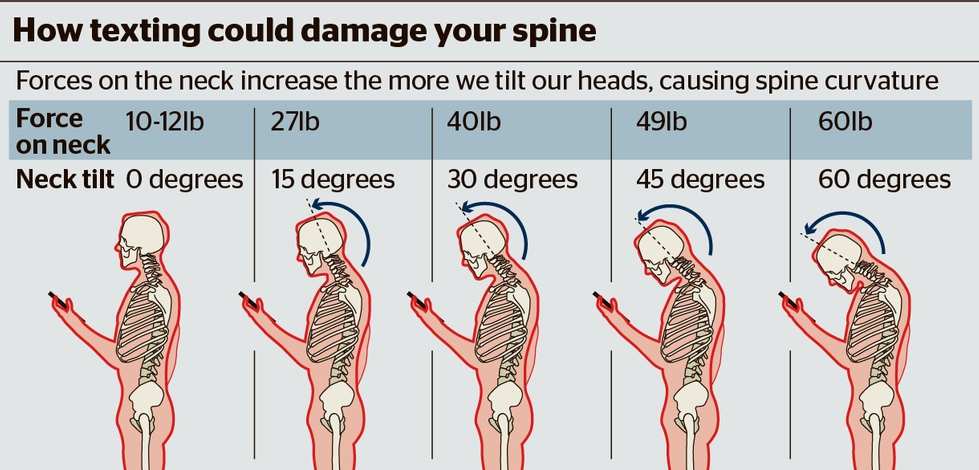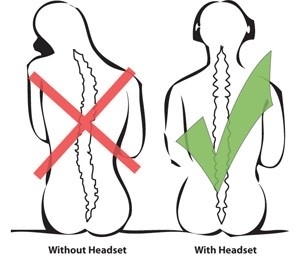Telephone
Mobile Phones
- Mobile phones
- Talking
- As with a traditional phone, use a hands-free feature to avoid sustained stresses on the neck and shoulder regions if prolonged phone use is inevitable.
- Holding mobile phone
- Disproportionate gripping of the device and twisting or bending of the wrists can cause strain on the fingers and wrists.
- Use a loose, comfortable grip, while keeping wrists neutral. Alternate hands when holding phone for prolonged periods.
- Use of phone keyboard
- Always using the same digit to text/message/email can cause excessive stress and pain after enough repetition.
- Alternate use of finger and thumb. Use texting short cuts when possible.
- Reading the screen
- As the head tilts forward to look at a phone screen, increasing forces are put on the neck. Holding the phone at awkward angles can also stress the shoulder, upper back, and even the eyes if straining to read small text.
- Keep the phone at chest, chin or eye level and work to keep the spine in an upright position.
- Talking

Traditional Phones
- Phone placement
- If set-up out of arm’s length, repeatedly reaching for the phone can put strain on the arm, shoulder and neck.
- Place the phone where it is easily accessible to minimize the risk of injury from repetitive reaching.
- Traditional phone usage
- Cradling the phone between your shoulder and head can result in neck pain, especially with prolonged phone use.
- Ideally, keep a neutral spinal posture and avoid using the phone on one side of the body.
- A hands-free headset can help with maintenance of appropriate posture while also allowing one to write, type, and move about the area to perform other workplace tasks.
- If office is set-up in a private space, use of speaker-phone may be appropriate to reduce undue strain from poor posture.

References
- https://www.osha.gov/SLTC/etools/computerworkstations/components_telephone.html
- https://www.thefreelibrary.com/American+Physical+Therapy+Association+Endorses+Plantronics+Headsets%3B...-a055445928
- https://ergo.human.cornell.edu/ErgoTips2013/index.html
- https://cbsminnesota.files.wordpress.com/2014/11/spine-study.pdf
